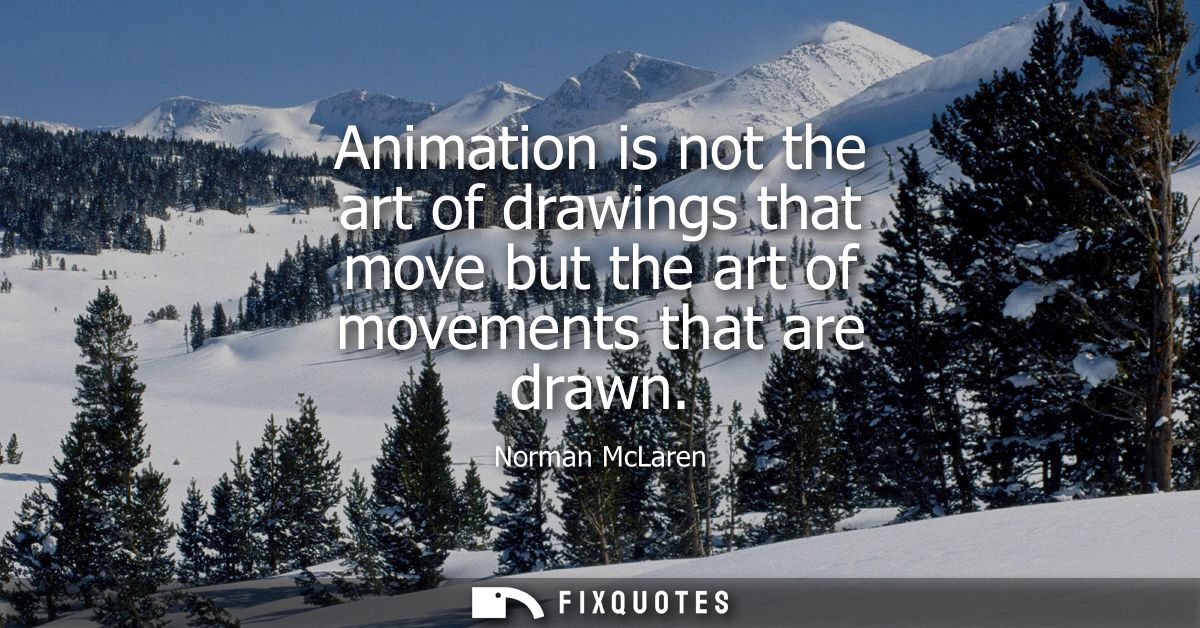"Animation is not the art of drawings that move but the art of movements that are drawn"
About this Quote
Norman McLaren's quote, "Animation is not the art of drawings that move but the art of movements that are drawn", offers a profound insight into the essence of animation. At a superficial look, one may think about animation as simply a series of illustrations that, when played in sequence, give the impression of motion. However, McLaren's viewpoint dives deeper into the core of what animation really represents.
The key difference McLaren makes is in between the technical process of developing images that appear to move and the artistic endeavor of recording motion's essence. By highlighting "the art of movements that are drawn", McLaren highlights the animator's function in bringing life to fixed images. The animator must understand movement in its most nuanced kinds, catching subtle gestures, fluidity, and rhythm. This process transforms still images into a coherent story or expression of life, feeling, and intention.
Animation, for that reason, is not entirely about drawing; it has to do with understanding how things move. Whether it's the overstated stretch and squash in a kid's cartoon, the realistic gait of a 3D-rendered animal, or the fluid grace of a rotoscoped dancer, animators should study real-world physics and adjust them creatively. This needs a keen observation of the world and equates feelings and actions into a fluid series of frames.
In addition, McLaren's quote recommends that animators imbue their productions with a soul or a spirit through movement, transcending the static nature of illustrations. It is this infusion of life that audiences get in touch with mentally, whether it's in the determined stride of a hero or the trembling anticipation of a first kiss.
In essence, McLaren's statement is a suggestion that animation is a dynamic art kind that exceeds the mechanics of movement. It is about capturing and conveying the extremely essence of life and emotion, one frame at a time, thus challenging animators to focus not only on what is seen however how it is felt.
More details
About the Author

